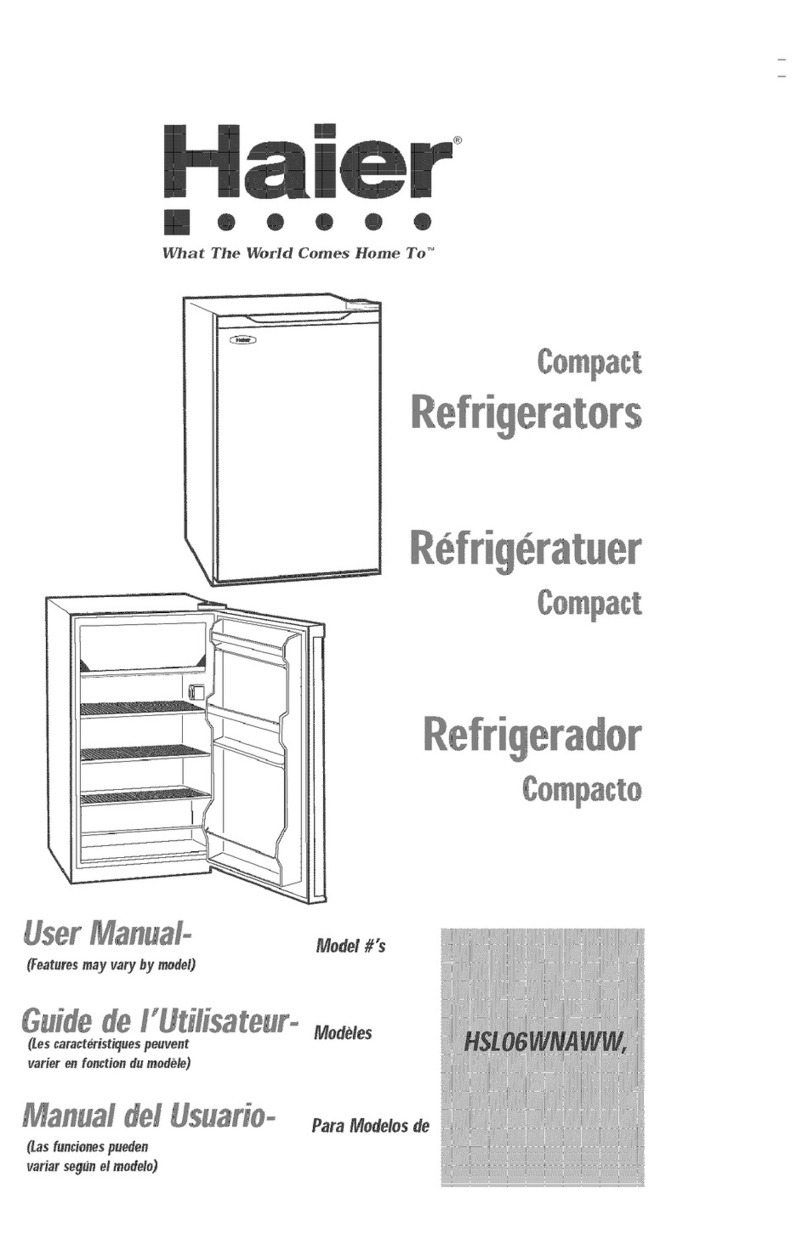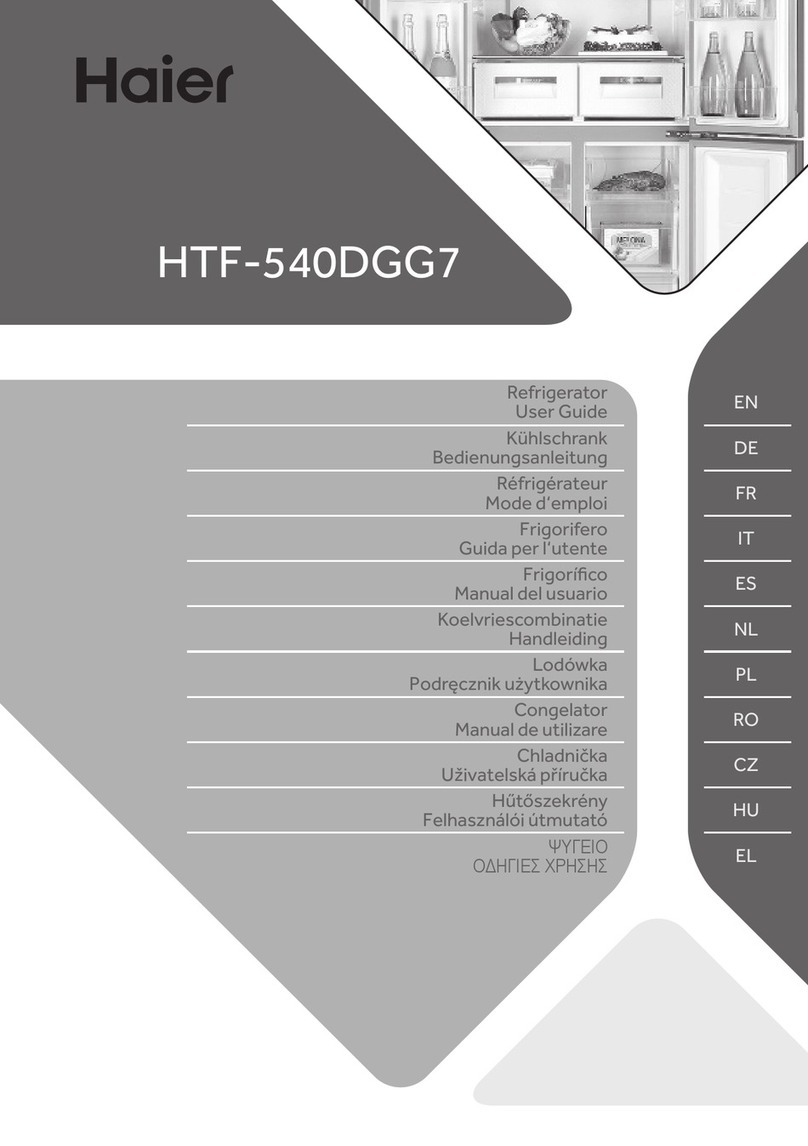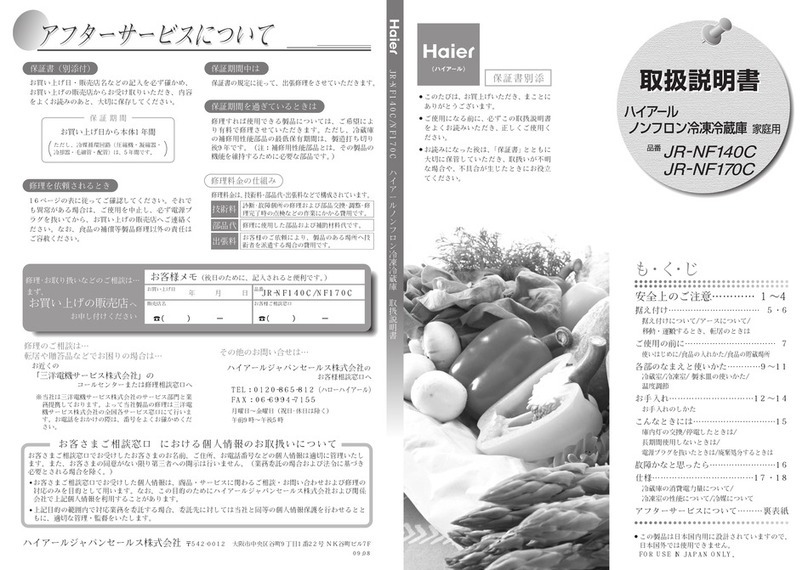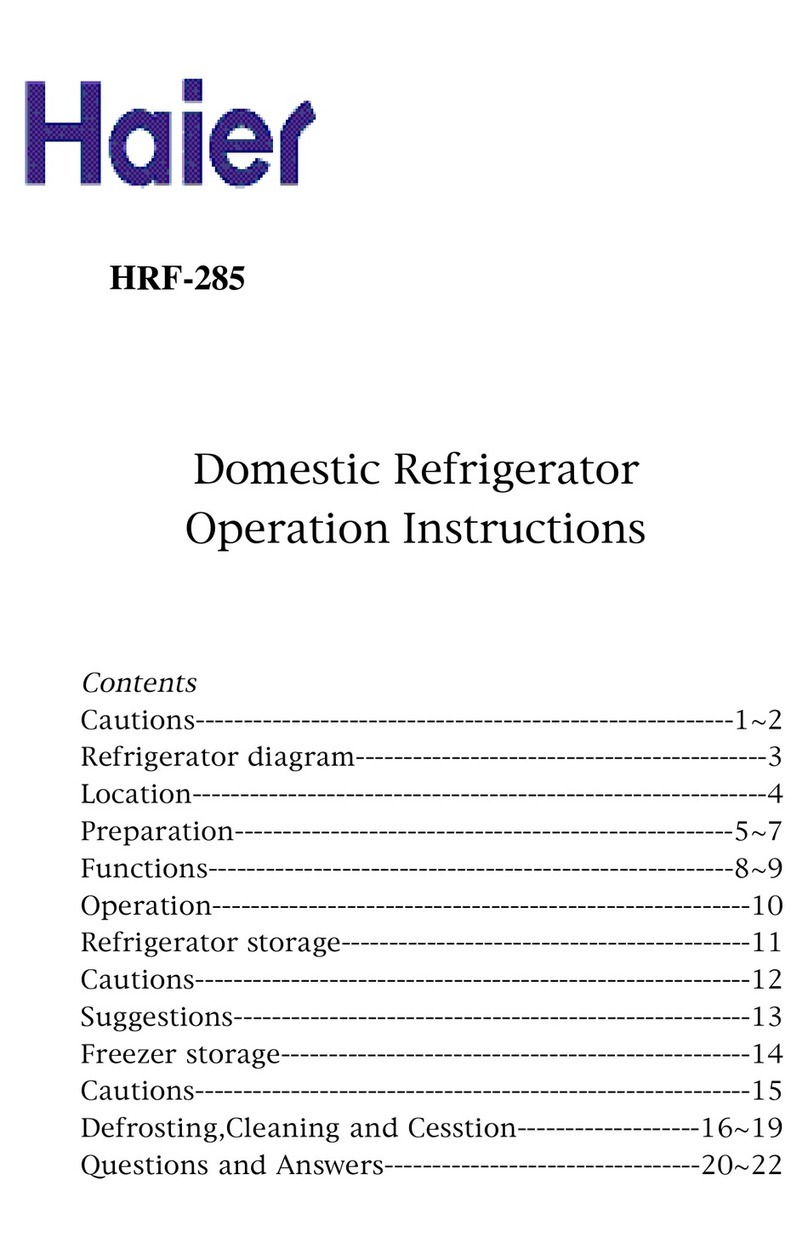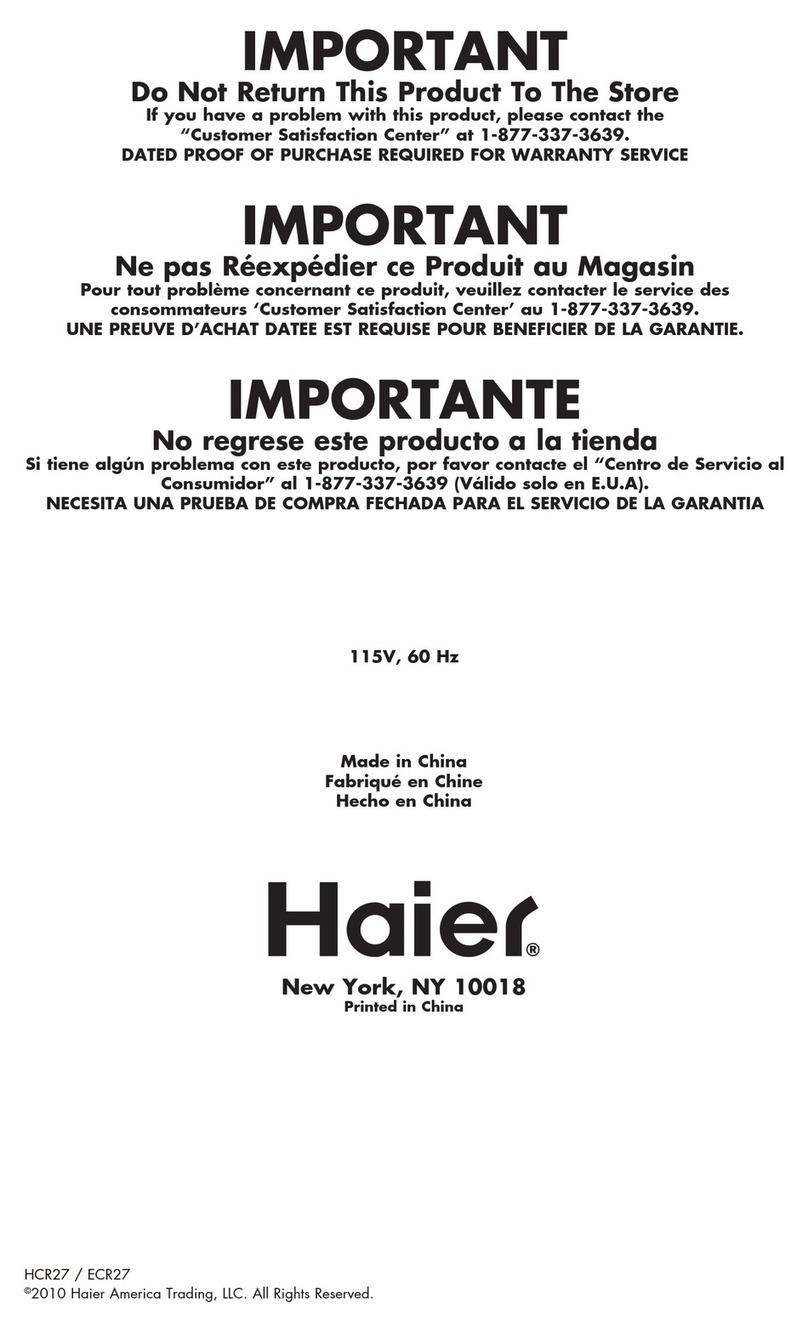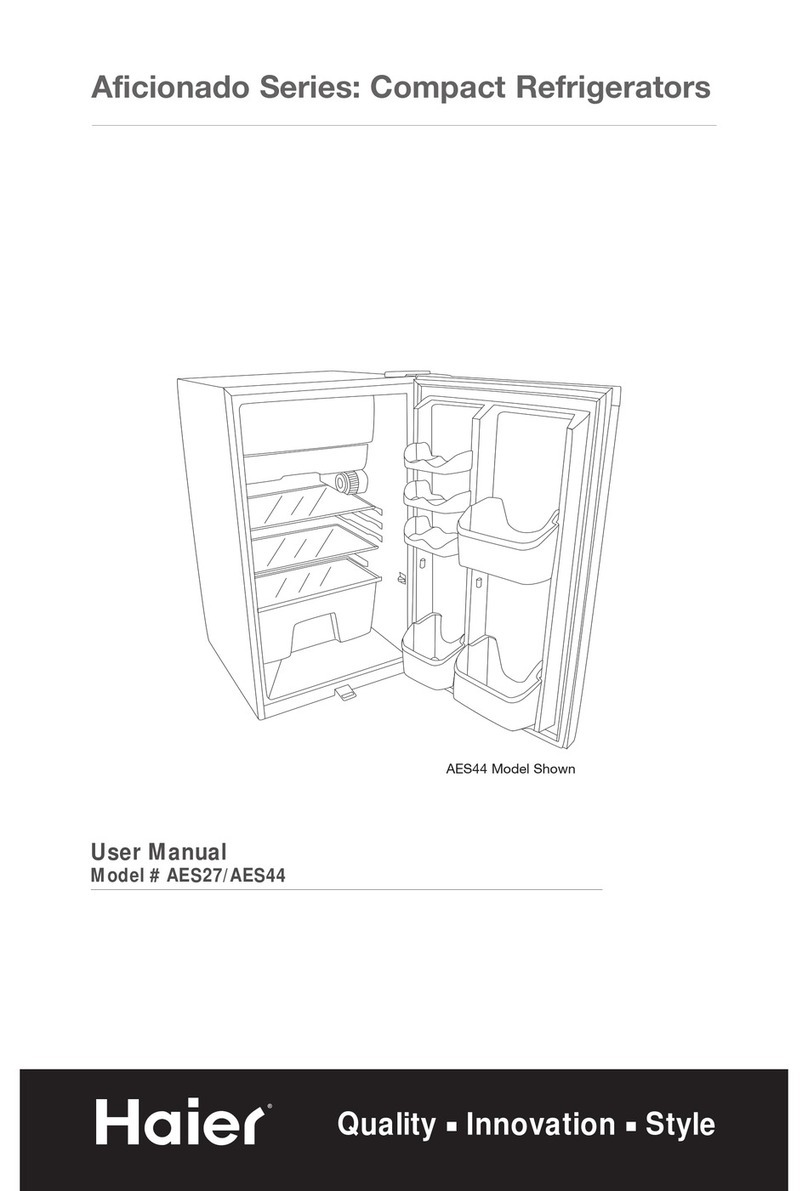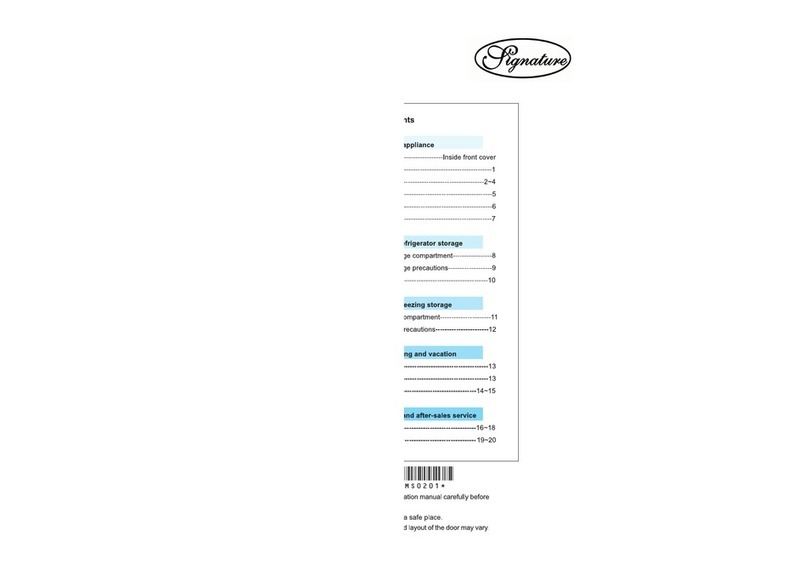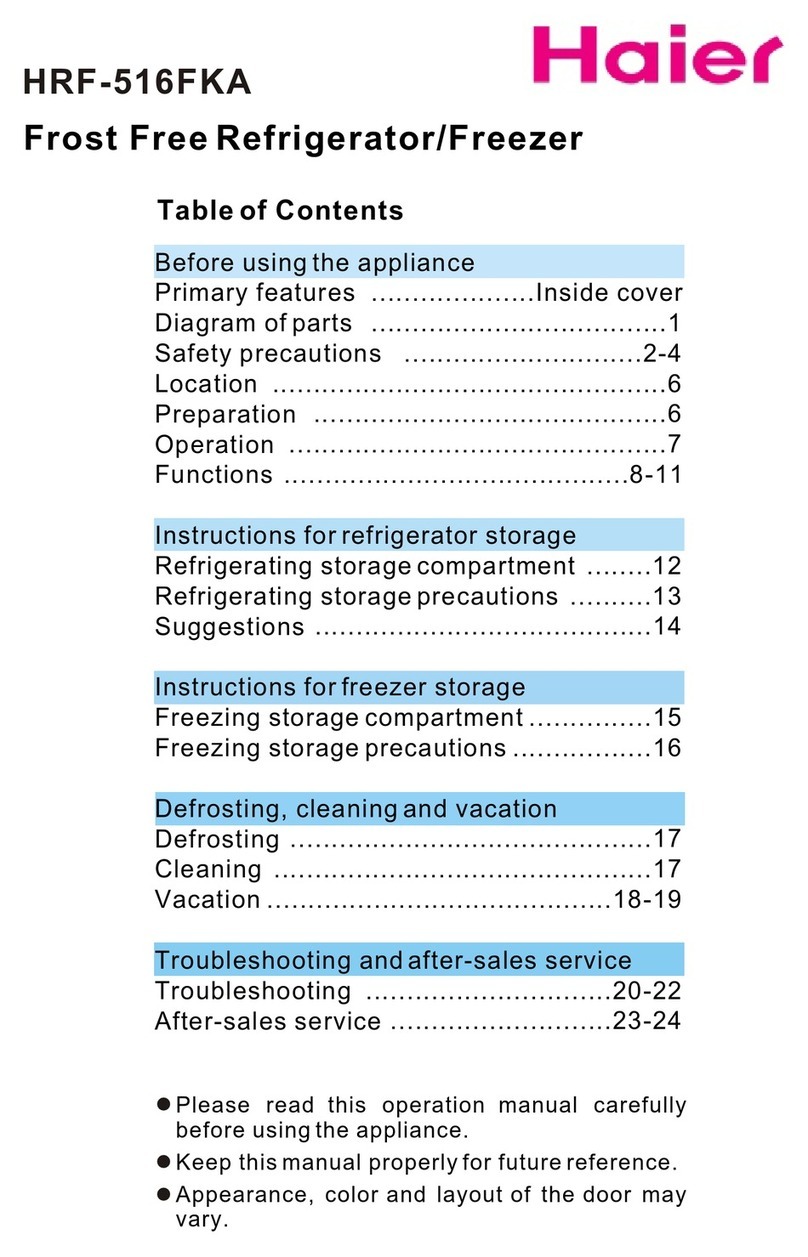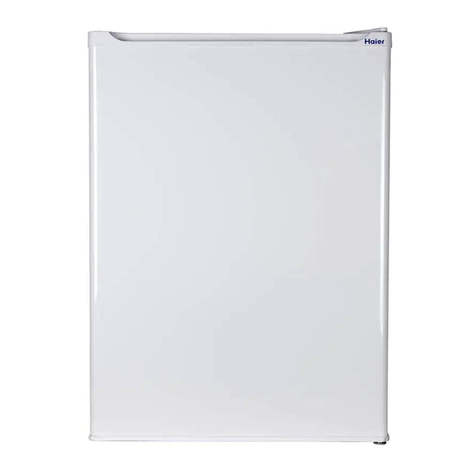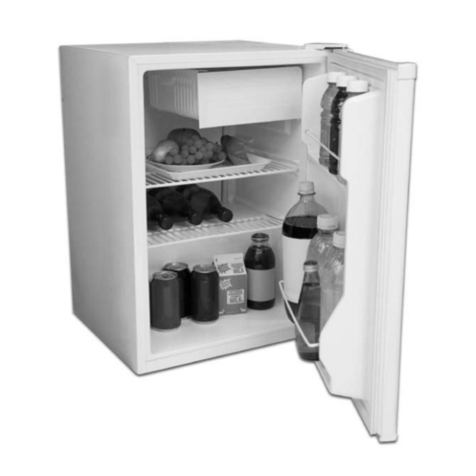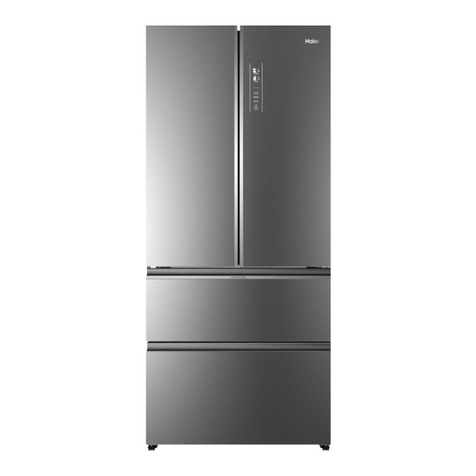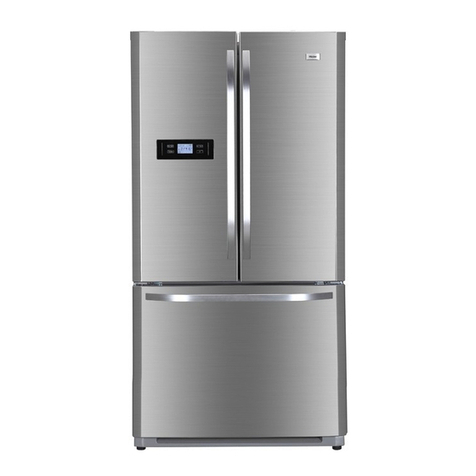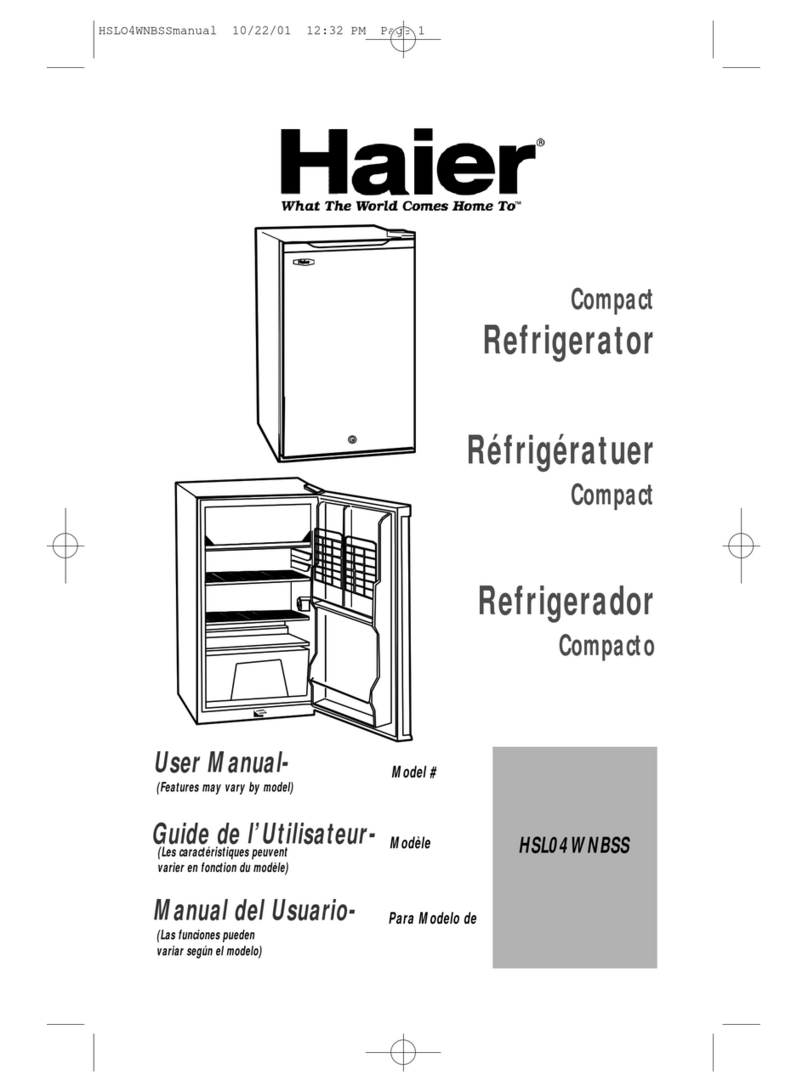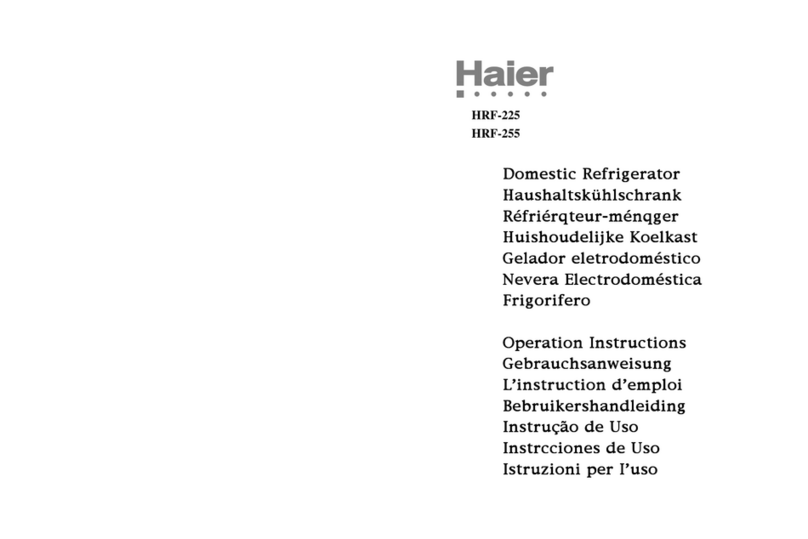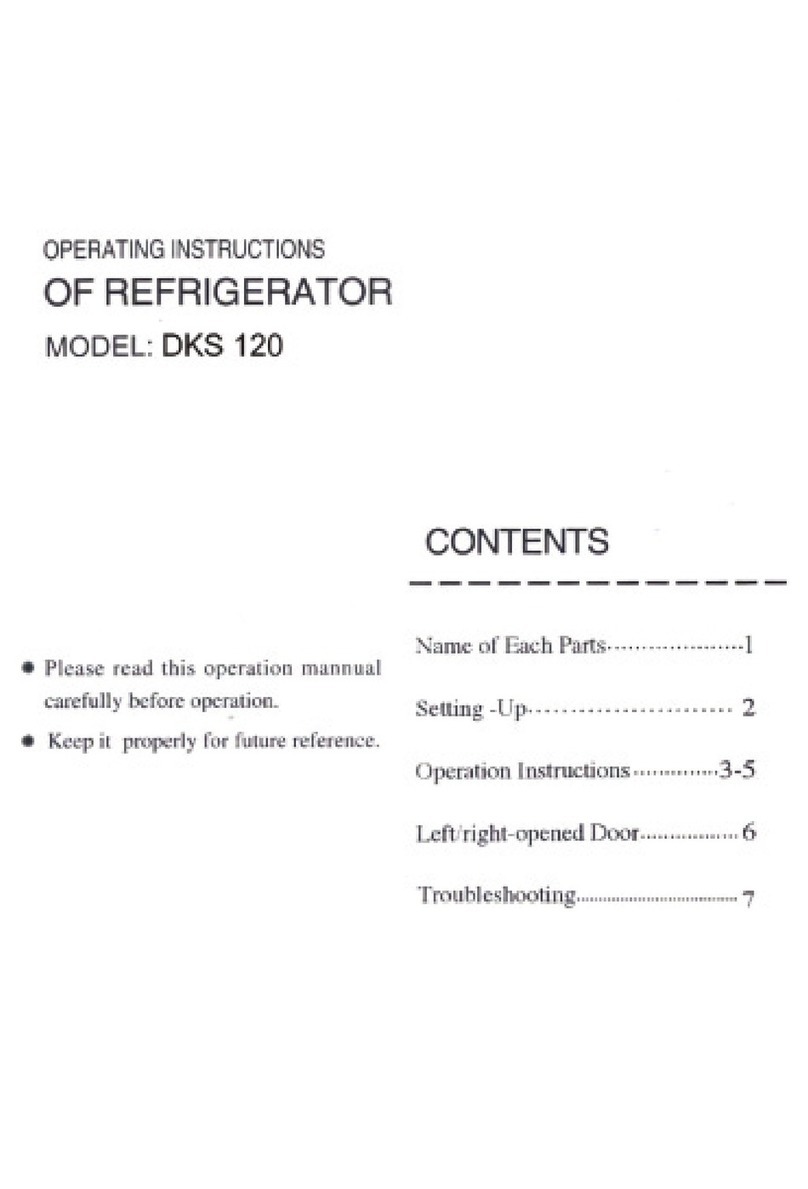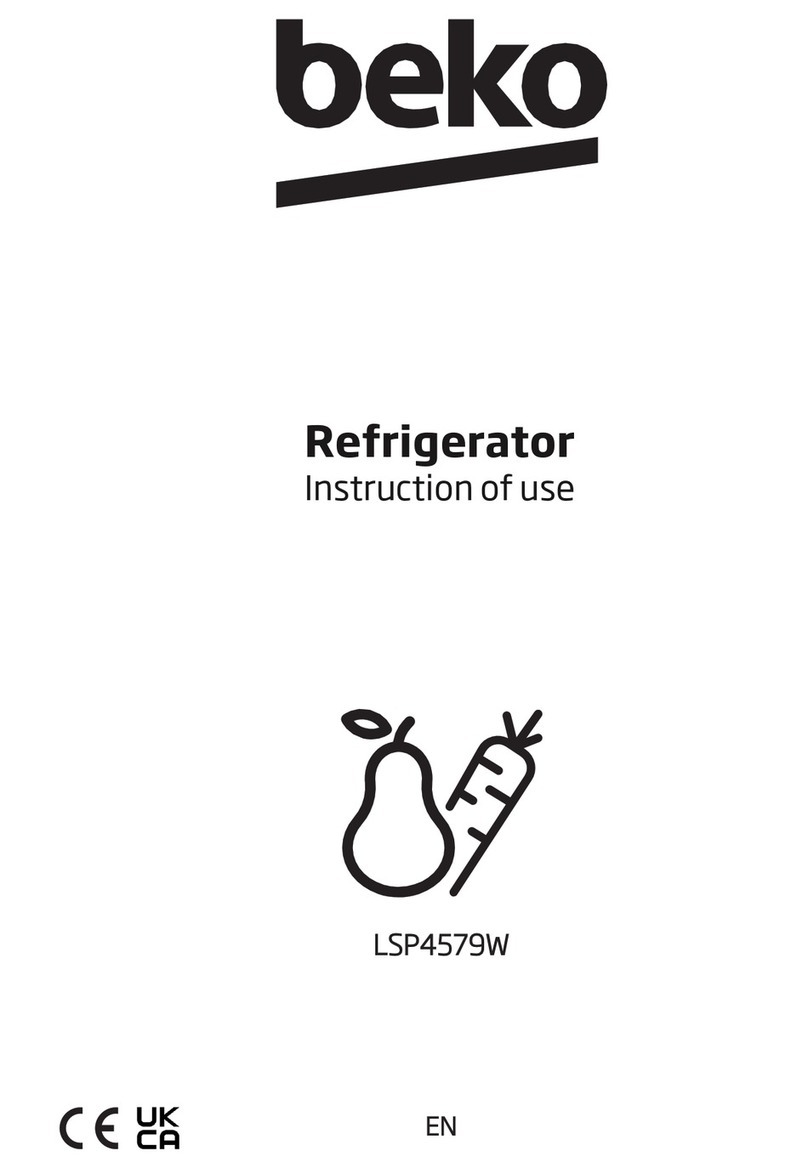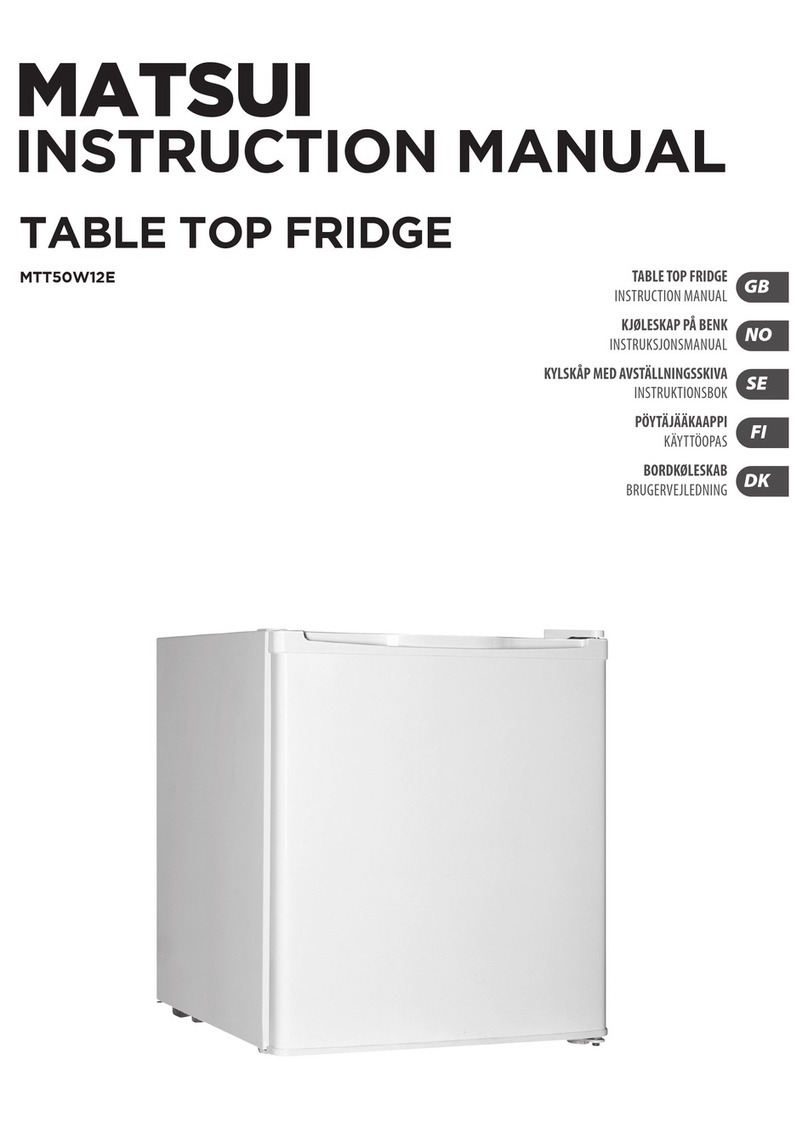on't- Cover the shelves with any protective materials which may obstruct air circulation.
on't- Store poisonous or any dangerous substances in your fridge. It has been
designed for the storage of edible foodstuffs only.
on't- Consume food which has been refrigerated for an excessive length of time.
on't- Store cooked and fresh food together in the same container. They should be
packaged and stored separately.
on't- Let defrosting food or food juices drip onto already stored food.
on't- leave the door open for long periods, as this will make the appliance more costly
to run and cause excessive ice formation.
on't- Use sharp edged objects such as knives or forks to remove the ice.
on't- se hairdryers, or electrical appliances for defrosting only use item
recommended by the manufacturer.
on't- put hot food into the appliance. Let it cool down first.
on't- put liquid-filled bottles or sealed cans containing carbonated liquids into the
freezer section, as they may burst.
on't- Give children ice cream and water ices direct from the freezer section. The low
temperature may cause 'freezer burns' on the lips.
on't- Try to keep frozen food which has thawed; it should be eaten within 24 hours or
cooked and refrozen.
on't- Damage the refrigerant circuit at any time
o's and on'ts
o- keep raw meat and poultry below cooked food and dairy products.
o- Leave lettuce, cabbage, parsley and cauliflower on the stem.
o- Wrap cheese firstly in greaseproof paper and then in a polythene bag, excluding As
much air as possible. For best results, take out of the fridge compartment an hour before
eating.
o- Wrap raw meat and poultry loosely in polythene or aluminium foil. This prevents
drying.
o- Wrap fish and offal in polythene bags.
o- Wrap food with a strong odour or which may dry out, in polythene bags, or
aluminium foil or place in airtight container.
o- Wrap bread well to keep it fresh.
o- Chill white wines, beer, larger and mineral water before serving.
o- Check contents of the low temp compartment every so often.
o- Keep food for as short a time as possible and adhere to
"
B
est before
"
and
"
Use by
"
etc. dates.
o- Store commercially prepared food in accordance with the instructions given on the
packets.
o- Always choose high quality fresh food and be sure it is thoroughly clean before
Storing it.
o- Wrap all food in aluminium foil or food quality polythene bags and make sure any
air is excluded.
o-Keep ventilation openings, in the appliance enclosure clear of obstruction.
o-ensure that frozen food does not rise in temperature while defrosting, a rise in
temperature during defrosting may shorten the storage life of your food.
